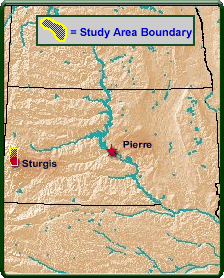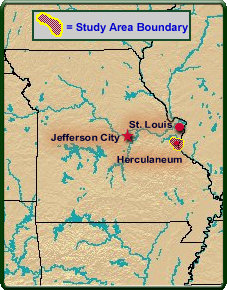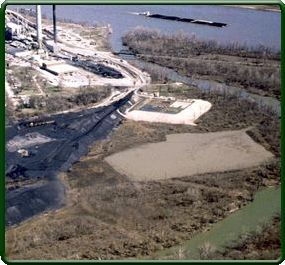Upper Midwest Environmental Sciences Center
|
|
| Home/ Overview/ Science Programs/ Data Library/ Products and Publications/States/ Rivers/Teachers and Students/ Links/ Contact/ Search |
Effect of Mining Activities on Wildlife
 Environmental contaminants associated with mining activities may
affect wildlife species in many ways and at many levels within the
ecosystem. Some contaminants associated with mines (e.g., lead,
arsenic, cyanide, etc.) may cause acute or chronic effects on resident
wildlife.
Environmental contaminants associated with mining activities may
affect wildlife species in many ways and at many levels within the
ecosystem. Some contaminants associated with mines (e.g., lead,
arsenic, cyanide, etc.) may cause acute or chronic effects on resident
wildlife.
At Whitewood Creek near Deadwood, South Dakota, more than 100 million
tons of gold-mine tailings were discharged into the creek from 1876
until 1977. Because of tailings and associated heavy metal contamination,
Whitewood Creek, downstream of the discharge point, was considered
a lifeless stream during these years.
The effluent still sometimes exceeds national water quality standards
for various toxic inorganic constituents including mercury, arsenic,
cadmium, and cyanide.
The study focuses on whether wildlife inhabiting Whitewood Creek are being exposed and injured. Bird eggs and chicks were collected from Whitewood Creek and analyzed for heavy metals.
Another mine-related issue involves Joachim Creek near Herculaneum, Missouri. A lead smelter near this site that has been active since the late 1880s contributes heavy metals to the local environment through waste water discharges, erosion of tailing piles (coarse grain sediments), and air emission fallout.
 This study focuses on determining lead exposure in wildlife inhabiting
Joachim Creek. Adult birds of several species were collected from Joachim Creek
near Herculaneum, Missouri, and analyzed for heavy metals. These results will assist the U.S. Fish and Wildlife Service in
determining whether action needs to be taken to protect wildlife
resources at these sites.
This study focuses on determining lead exposure in wildlife inhabiting
Joachim Creek. Adult birds of several species were collected from Joachim Creek
near Herculaneum, Missouri, and analyzed for heavy metals. These results will assist the U.S. Fish and Wildlife Service in
determining whether action needs to be taken to protect wildlife
resources at these sites.
The project was completed September 2001.

Principal Investigator: Tom Custer



